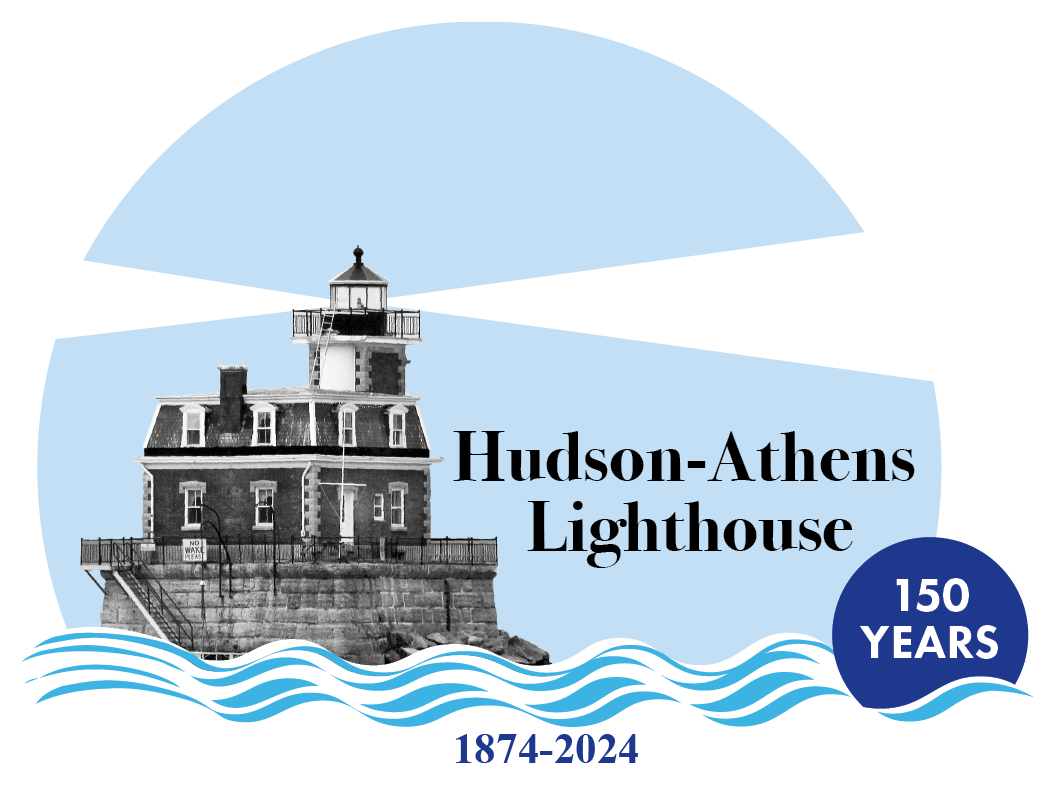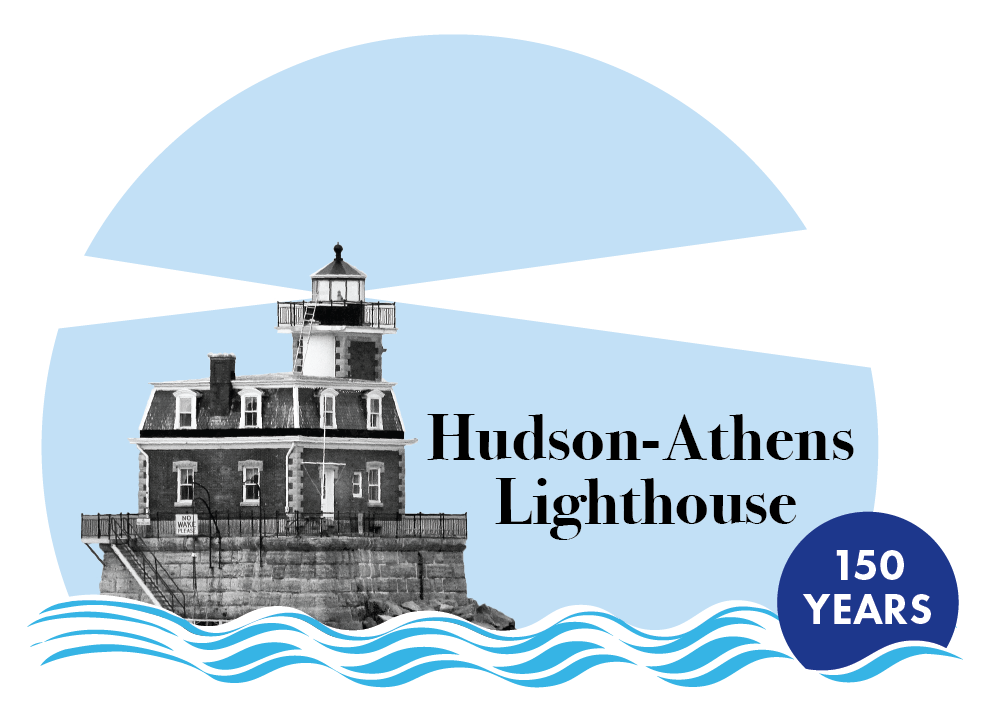Our Structure
The Hudson-Athens Lighthouse Preservation Society (HALPS) was formed in 1982 to preserve and maintain the lighthouse. The U.S. Coast Guard leased the property to HALPS in 1984, while retaining responsibility for the upkeep of the beacon. On July 3, 2000, the title to the lighthouse was transferred to HALPS, a fitting reward for their dedicated efforts. HALPS has recreated the interior of the lighthouse to represent life in the 1930s, when the Brunner family lived there. Many authentic pieces donated by the Brunner family are on display, and the original fog bell, which still has its clockwork mechanism, is mounted outside on the tower.
Keepers Room
There were several keepers that were stationed here at this lighthouse over the years, the last civilian keeper being Emil Brunner. Our restoration efforts have focused on the years in which he and his family lived at the lighthouse. This small room on the first floor was his bedroom, as he had to be up several times during the night to check the light and refuel the lantern. The oil or kerosene for the lantern was stored in the basement and had to be brought up to the lantern room. The partial lens seen on the floor in the lighthouse is one similar to that which would have been here. The original lens is in the South Street Seaport Museum in New York City.
Emil Brunner, the last civilian keeper, was here from 1932 until 1949. The last person to tend the lighthouse was William Nestlen, who oversaw the operations of the light and fog signal from 1966 until 1986. The first keeper was Henry D. Best. He kept the light until his death in January of 1892 and was succeeded by his son, Frank. Through the years the lighthouse had nine light keepers including one woman, Nellie Best, for a short time in 1918.
The Kitchen
The kitchen was the heart of the lighthouse. Something was going on here for a good part of the day with the preparation of meals, baking and coffee, of course. As was everything in the lighthouse, cooking methods were rather primitive. The coal stove meant that it was nice and warm in the winter but a bit toasty during the summer months. Water was collected from the roof into a cistern located under the kitchen. It was then pumped by hand when needed, using the old fashioned hand pump on the sink.
There was no indoor plumbing until 1938 when a bathroom was installed inside the lighthouse as well as a central heating system that was run by a coal furnace. Up until then there was an outhouse that hung out over the river just to the right of the flagpole. A fun experience in the winter for sure. Laundry was done by hand in the old days, but the Brunners had an old gas engine washing machine. Ironing was done with a cast iron flat iron that was heated on the kitchen stove.
The Dining Room
The next room was the dining room. What a view for dinner! Today in this room are some Hudson River memorabilia along with a replica of a Keeper's hat and badge. In the corner is a reproduction of a Lighthouse Service blanket. Originals of these items in good condition are very hard to come by and are very expensive to purchase.
The Stairway
The stairs are narrow and winding with brass hand railing. The Lighthouse Service was noted for all its brass work. All of the fittings of the lens and lantern apparatus were made of brass, as well as many other items found in the lighthouse such as dustpans, work boxes, oil lanterns, oil cans, etc. When the lighthouse was closed up in 1954, most of the brass work was taken out. This railing is all that remains. All of the brass was expected to be kept polished. The last verse of a poem written by Fred Morong, a Maine light keeper, circa 1920 goes like this:

"And when I have polished until I am cold,
And I'm taken aloft to the Heavenly Fold,
Will my harp and my crown be made of pure gold?
No, brass work."
Fred Morong, a Maine light keeper
Bedrooms
The second floor has four rooms that were used as bedrooms. The Brunners had five children, four who lived at the lighthouse until the family moved into the Town of Athens in 1938.They were Emily, Richard, John, Robert (who was actually born in the lighthouse), and Norman, who was born after the family had moved into town. Mr. Brunner remained at the lighthouse, while the rest of his family lived in town.
Raising four children in such a confined space must have been no small challenge. It is hard to imagine not having a yard or streets to walk down or other children to play with. One of the rooms on the second floor is used to interpret river life around the lighthouse and the waterfront industries of both Hudson and Athens. You will find some pictures of the children who lived here as well as some enlarged copies of old postcards from the Hudson and Athens area. The larger bedroom has some displays and pictures of boats that operated on the river. Also in the small room you will find a display of all the lighthouses, which were on the Hudson River - both past and present.
Lantern Room
The light of the lighthouse remains here. Before modern technology and automation, the keeper would have to keep the light shining. Every night he would have to remove the day curtain, light the lamps and make sure that they burned brightly and did not run out of oil. This usually meant several trips a night up and down the stairs. During the hours of darkness, the "light" was never to go out and if the Lighthouse Service received complaints that the light was not lit or that it was poorly lit, the light keeper would be in danger of losing his job. In the morning he would have to put up the curtain, clean the soot from the lantern room, clean the lens, polish the brass, and make the lamps ready for the following night. This had to be done everyday.
The lantern room as well as the entire lighthouse was subject to periodic inspection by a Lighthouse Service District Inspector. If all were not in ship-shape condition, the keeper would be written up and warned. If the lighthouse continually did not meet the Lighthouse Service standards, the keeper would be replaced. However, if all were well, he would receive praise and usually a written commendation. The Lighthouse Service had very strict regulations as to how a lighthouse should be kept.
The original light of this lighthouse was a fixed light, which was changed to a flashing light in 1926. It was a fifth order lens, being one of the smallest, but could still be seen as far away as one needed on the river. The light is 54 feet above sea level. Today, the light is automated and is turned on at night by means of a light sensor. It is solar powered and maintained by the US Coast Guard.






